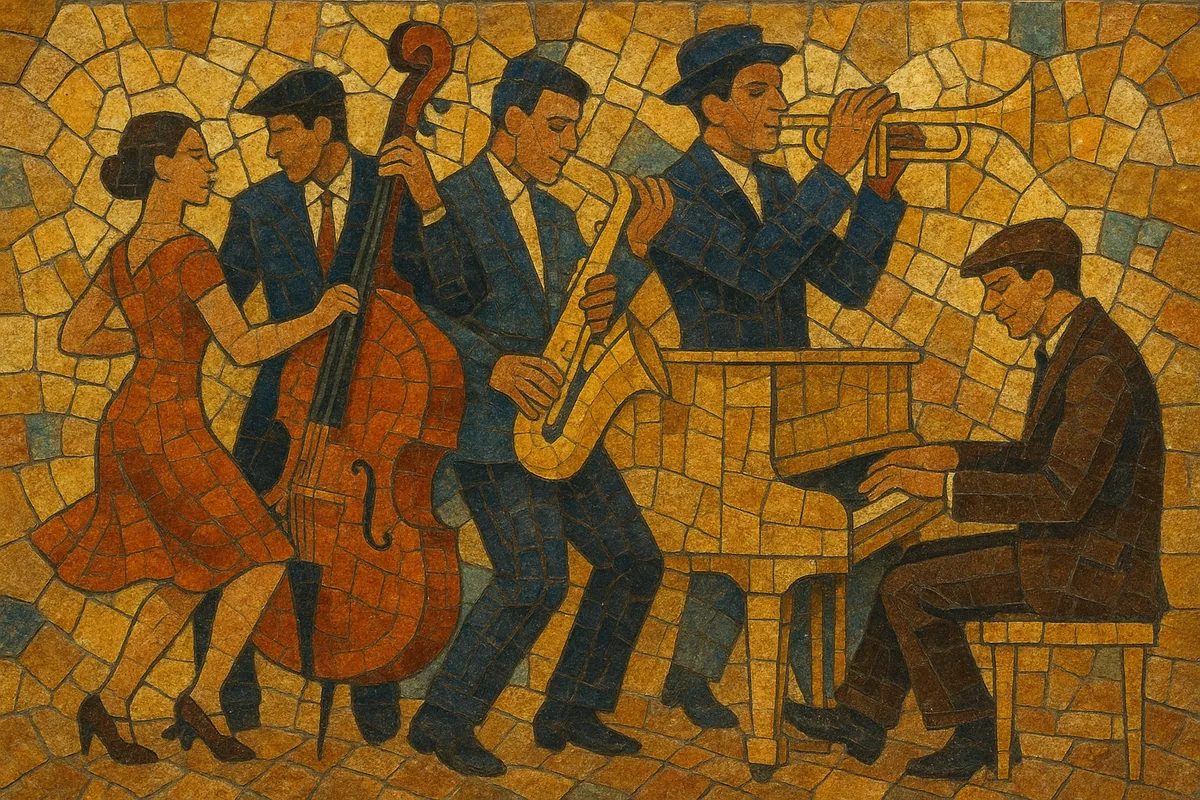Swing is a jazz style centered on a buoyant, danceable groove created by a walking bass, four-to-the-bar rhythm guitar, a backbeat emphasis on 2 and 4, and a lilted “swung” eighth-note feel. Typically performed by big bands (saxes, trumpets, trombones, and a rhythm section) as well as small combos, it balances written arrangements with improvised solos.
Hallmarks include call-and-response between horn sections, riff-based melodies, shout choruses that build intensity near the end of an arrangement, and rich sectional voicings grounded in blues language and ii–V–I harmonic motion. Tempos range from medium to brisk, serving social dances like the Lindy Hop and Jitterbug. Swing’s expressive phrasing, dance-floor focus, and sophisticated arranging made it the dominant popular music of the late 1930s and early 1940s.
Swing crystallized in African American band traditions and early jazz practices in cities such as New York (especially Harlem) and Kansas City. Arrangers like Don Redman and Fletcher Henderson codified sectional writing for saxes, trumpets, and trombones, while Louis Armstrong’s time feel and phrasing shaped the music’s rhythmic conception. The move from two-beat feels to four-beat walking bass lines and a steadier ride/hi-hat pulse laid the foundation for the swing groove.
Benny Goodman’s 1935 Palomar Ballroom success is often cited as the commercial spark of the Swing Era. Bands led by Duke Ellington, Count Basie, Chick Webb, Artie Shaw, Glenn Miller, Cab Calloway, and the Dorsey brothers popularized riff-based arrangements, shout choruses, and hot soloists. The Savoy Ballroom in Harlem and the Kansas City scene nurtured both cutting contests and dancer-driven tempos, while singers like Ella Fitzgerald and Billie Holiday brought the style to broad audiences.
The 1942–44 recording ban, wartime rationing, and changing economics for large dance halls pressured big bands. Concurrently, musicians in small late-night jam sessions pushed harmonic and rhythmic complexity, seeding bebop. By the late 1940s, swing’s cultural dominance waned, yet its vocabulary persisted in smaller groups, jump blues, and evolving jazz idioms.
Swing elements fed into rhythm & blues and, indirectly, rock and roll. Gypsy jazz and swing musette carried the feel in Europe. The 1990s saw a neo-swing/swing revival wave that re-centered Lindy Hop culture and big-band aesthetics for a new generation. Today, swing remains a core jazz language and a living social dance tradition worldwide.


